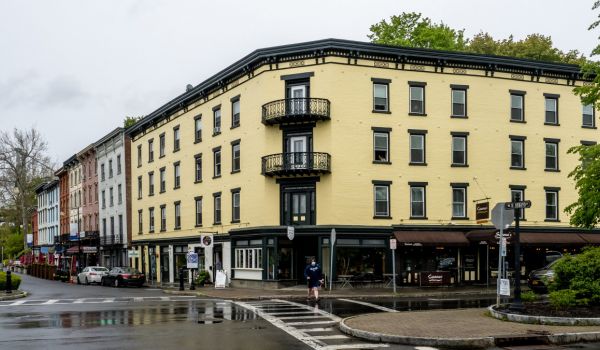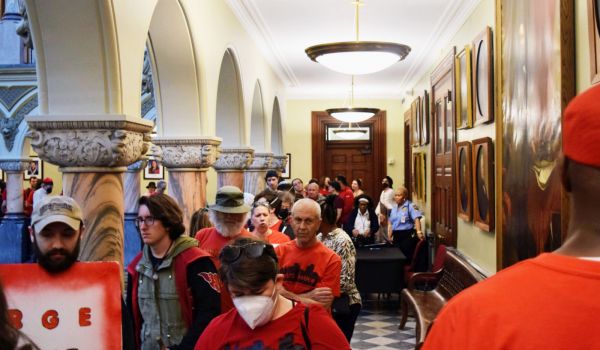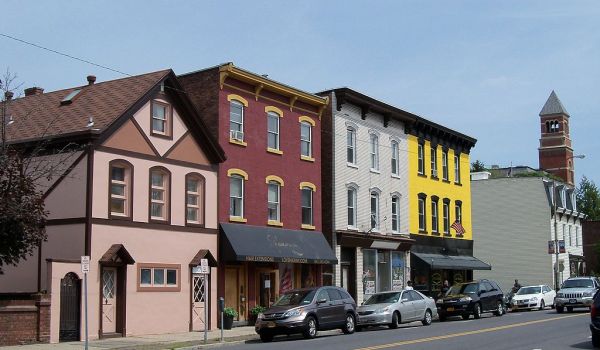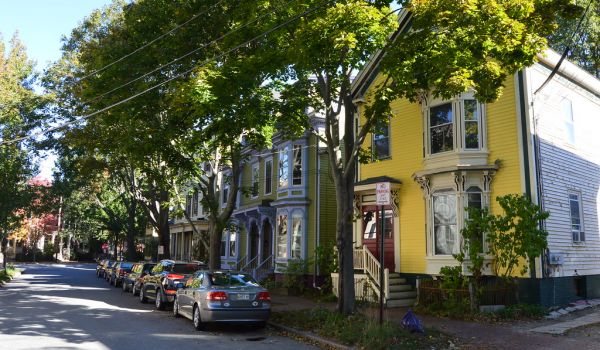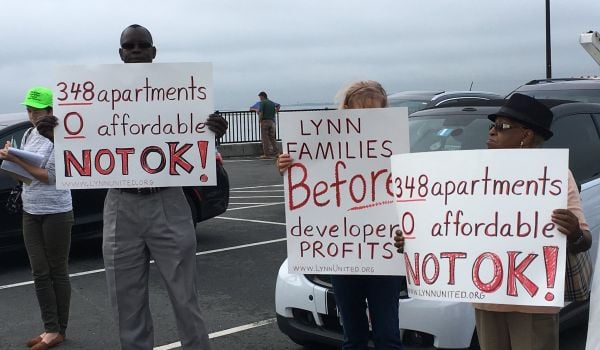Last month, the city of Kingston became the first in upstate New York to pass rent control. The precedent is galvanizing tenants, organizers and electeds in other cities across the state to conduct vacancy surveys, the first step to passing rent control under state law.
“We’ve spoken directly with elected officials that have said the Kingston law provided them momentum and has reignited the conversation around conducting these vacancy studies,” says Brahvan Ranga, the political director of For The Many, a nonprofit organizing political campaigns across the state. But those cities will face the same obstacles Kingston did: Political opposition to conducting vacancy studies and the risk that landlords will distort their data to keep units market rate.
Under the Emergency Tenant Protection Act, it was initially only New York City and its surrounding suburbs that could restrict rents on buildings built before 1974, the year the law was passed. After a wave of housing reforms in 2019, other cities across the state were also permitted to opt in to rent control, as long as they had a vacancy rate of 5% or lower. Kingston’s housing vacancy rate is 1.57%, according to a survey released earlier in the year, so the city’s 1,200 units built before 1974 will have their rents set by a Rent Guidelines Board established by the county. Until then, those units are under a rent freeze.
Rebecca Garrard, legislative director of Citizen Action of New York, which has been organizing rent control campaigns upstate, says the organization learned from an earlier attempt at a vacancy study in Kingston.
That 2020 study was contracted out to a nonprofit which returned a much higher and, advocates charge, less accurate vacancy rate. Garrard says this is because the city did not mandate in its contract that the agency verify vacancies in person, putting its trust in landlords to respond accurately. And while the law allows cities to count non-responses from landlords as a 0% vacancy, the city’s contract did not enforce this, Garrard says. The result was a vacancy rate of about 6.7%, too high to enact rent control.
“We firmly believe that there were responses received from landlords that were absolutely not an accurate reflection of what the vacancy rates were in the property,” Garrard says of this earlier survey.
For the latest survey conducted in April of this year, owners were given more stern penalties for not responding.
“We were very clear in the letter that went out to the owners that either me or the Building Safety Department has the right to visit the property to verify answers provided,” Bartek Starodaj, director of Kingston’s Office of Housing Initiatives, told Next City. If they didn’t hear back from the landlord by May 2nd, the city assumed they had no vacancies.
Ultimately, only 20 of the 1,270 units surveyed were vacant. According to Starodaj, the results were “not surprising” as they matched anecdotal evidence of a lack of vacant apartments in Kingston.
In Rochester, tenant Oscar L. Brewer Jr. ran into similar problems as he and other advocates pushed the city to conduct an accurate vacancy survey. Brewer, 43, lives in a two-bedroom unit with his 5-year old daughter, paying $600 a month. He worries that if he ever has to move out he would have to pay $800 or $900, which he can’t afford.
His current apartment is deteriorating: He says there are 9 open violations on the property and the unit’s certificate of occupancy expired 2 years ago. He rents month to month, as his management company has refused to give him a lease.
A survey commissioned by the city of Rochester in 2021 under then-mayor Lovely Warren turned up a 9% vacancy rate, which Brewer and other advocates believe is much higher than the real rate. Brewer, who is a member organizer with Citizen Action, believes the survey was distorted by a low response rate from landlords – just 37%. Unlike Kingston, Rochester did not allow non-responses to be tallied as 0% vacancy, nor did the city visit buildings to validate survey responses. A request for comment sent to Rochester’s city planning office was acknowledged but no comment was provided.
Rochester officials sent surveys to the owners of 668 properties with six or more units built before 1974, a total of 10,248 units. The city reported that there was “no compelling evidence” that the data is biased. Acknowledging the low response rate, a slideshow accompanying the completed survey states that in order for the vacancy rate to be below 5%, the non-responsive buildings would need a vacancy rate of less than 3%.
But tenant advocates believe the city’s vacancy rate is much lower than what officials concluded. The Rochester City-Wide Tenant Union criticized the survey’s methodology after it was released, with the union pointing out multiple ways that landlords had allegedly told city officials they were considering skewing the survey results by “voluntarily not reporting their low vacancy data, reporting occupied units as vacant if tenants were behind on rent, or simply marking occupied units vacant.”
Brewer says the city should make the vacancy survey mandatory and that the state should penalize cities who don’t perform vacancy studies. “They really need a bit more money and really do a vacancy study the right way, mandate it,” Brewer says.
In-person verification of the vacancy survey would be more costly in Rochester, which is home to about 146,000 people, compared to Kingston, home to about 24,000. Citizen Action requested additional funding to be added for a vacancy survey, but Rochester City Council rejected the request, Brewer says.
Tenants also have to contend with unintended consequences of vacancy surveys, like landlords evicting tenants to boost their vacancy rate. Garrard says this happened during the first Kingston survey, when E&M Management evicted tenants from their buildings en masse, reported the higher vacancy and then put the buildings back on the market.
“We and many other organizations and council members received panicked calls from tenants who lived in the buildings, saying they’ve received no fault eviction notices,” Garrard says. To prevent this, Garrard recommends requesting vacancy data from a previous point in time, although this would make it harder to verify.
For now, tenants across the state are learning from previous vacancy studies as they try to push for such studies in their own cities. In addition to Rochester, Garrard says that there are campaigns in Albany, Buffalo, Newburgh and Syracuse to introduce vacancy surveys.
Housing activists in Rochester are not optimistic that the current mayor, Malik Evans, is interested in pursuing another study. A 21-member Housing Quality Task Force appointed by the mayor earlier this year released recommendations on June 23. Those recommendations include a landlord rating system so that tenants can make “informed choices,” more funding for code enforcement and new mixed-income housing, but they do not mention rent control. The membership of the task force had plenty of elected officials and several landlords, but little tenant representation. The only two tenant representatives on the taskforce publicly resigned, alleging that their suggestions were not being considered.
But Brewer is still hoping the results in Kingston can get Rochester’s mayor interested in another vacancy study.
“If certain cities are willing to pass these laws, why won’t Rochester?” Brewer asks. “If it happened in Kingston, it can happen in Rochester, it can happen in Syracuse, it can happen in Buffalo, it can happen in Ithaca. It can happen statewide.”
This article is part of Backyard, a newsletter exploring scalable solutions to make housing fairer, more affordable and more environmentally sustainable. Subscribe to our weekly Backyard newsletter.

Roshan Abraham is Next City's housing correspondent and a former Equitable Cities fellow. He is based in Queens. Follow him on Twitter at @roshantone.




